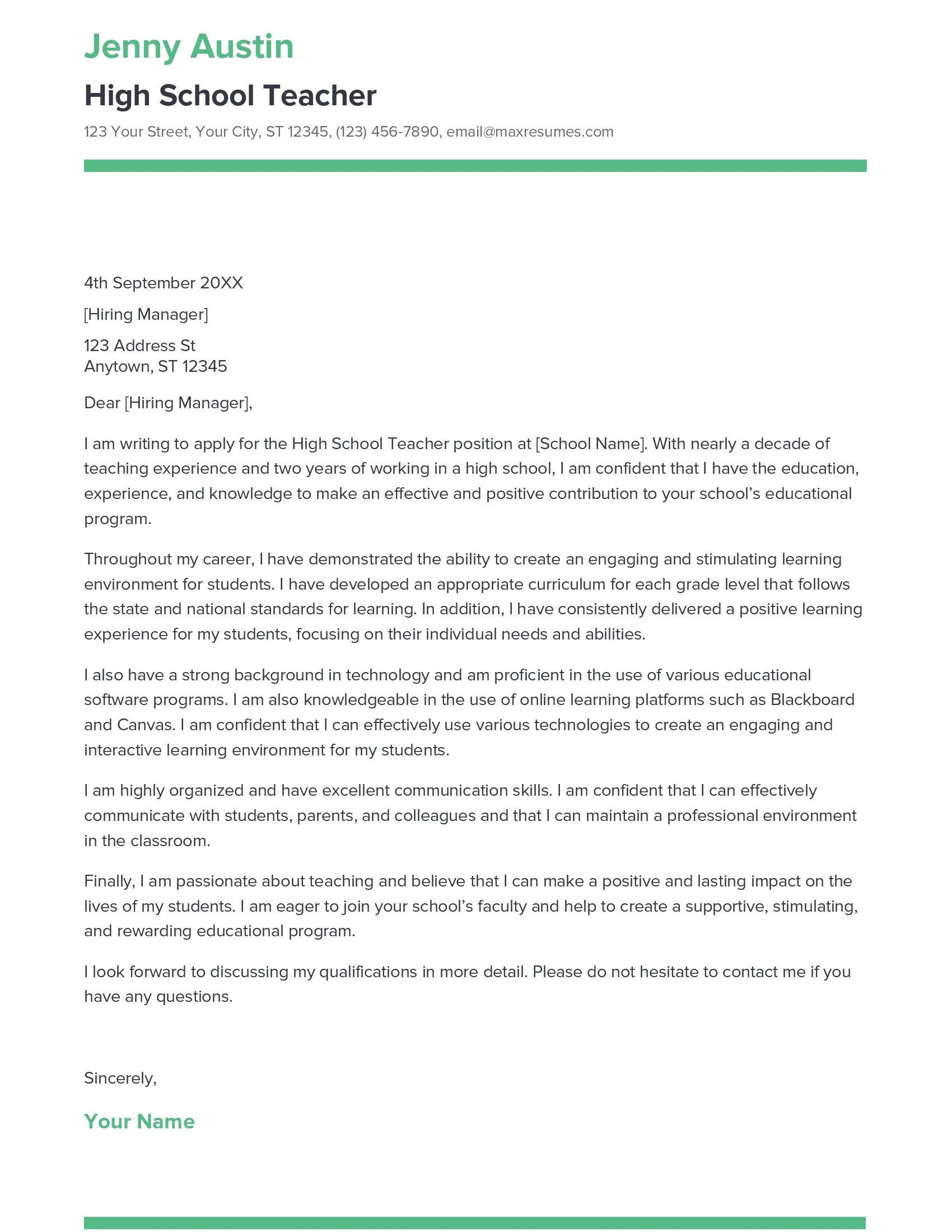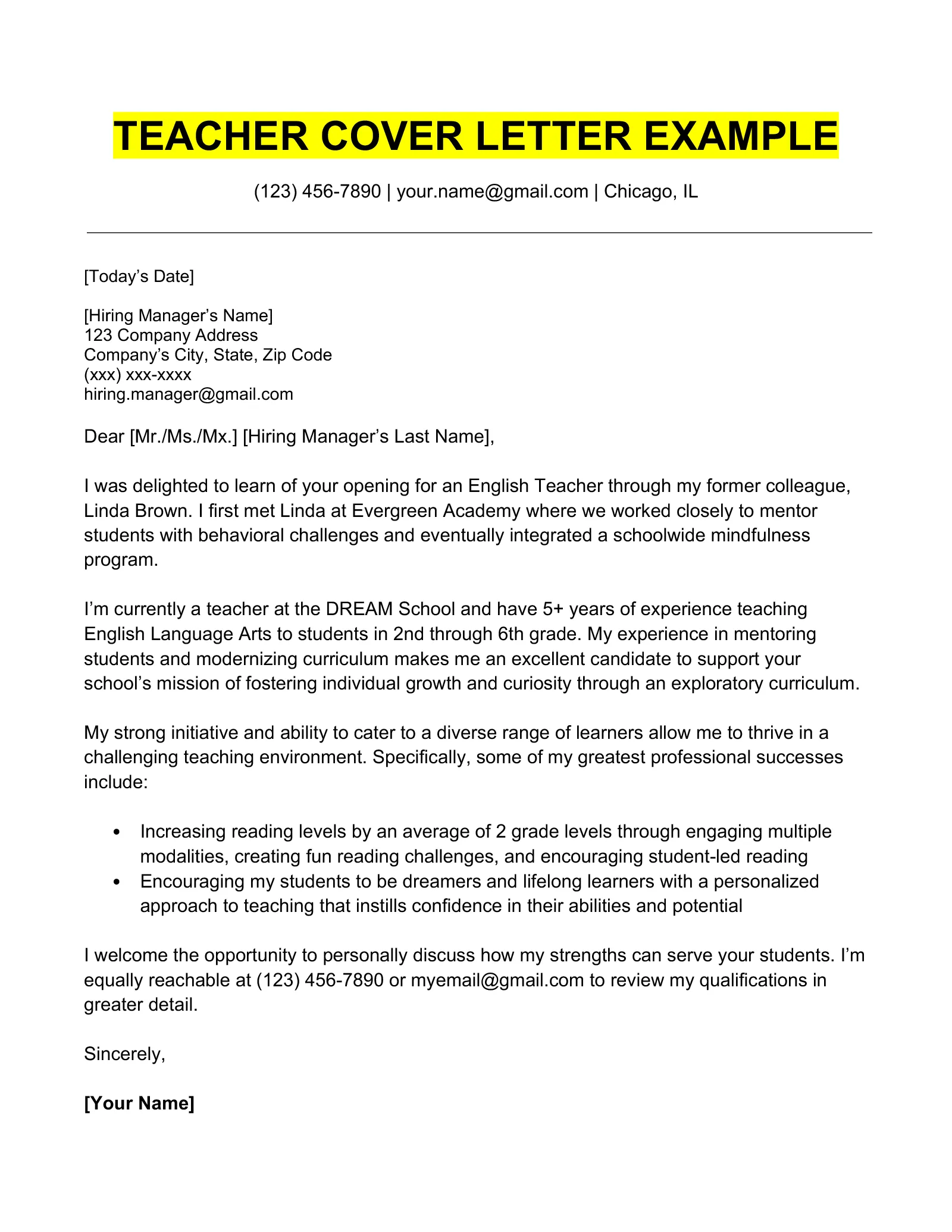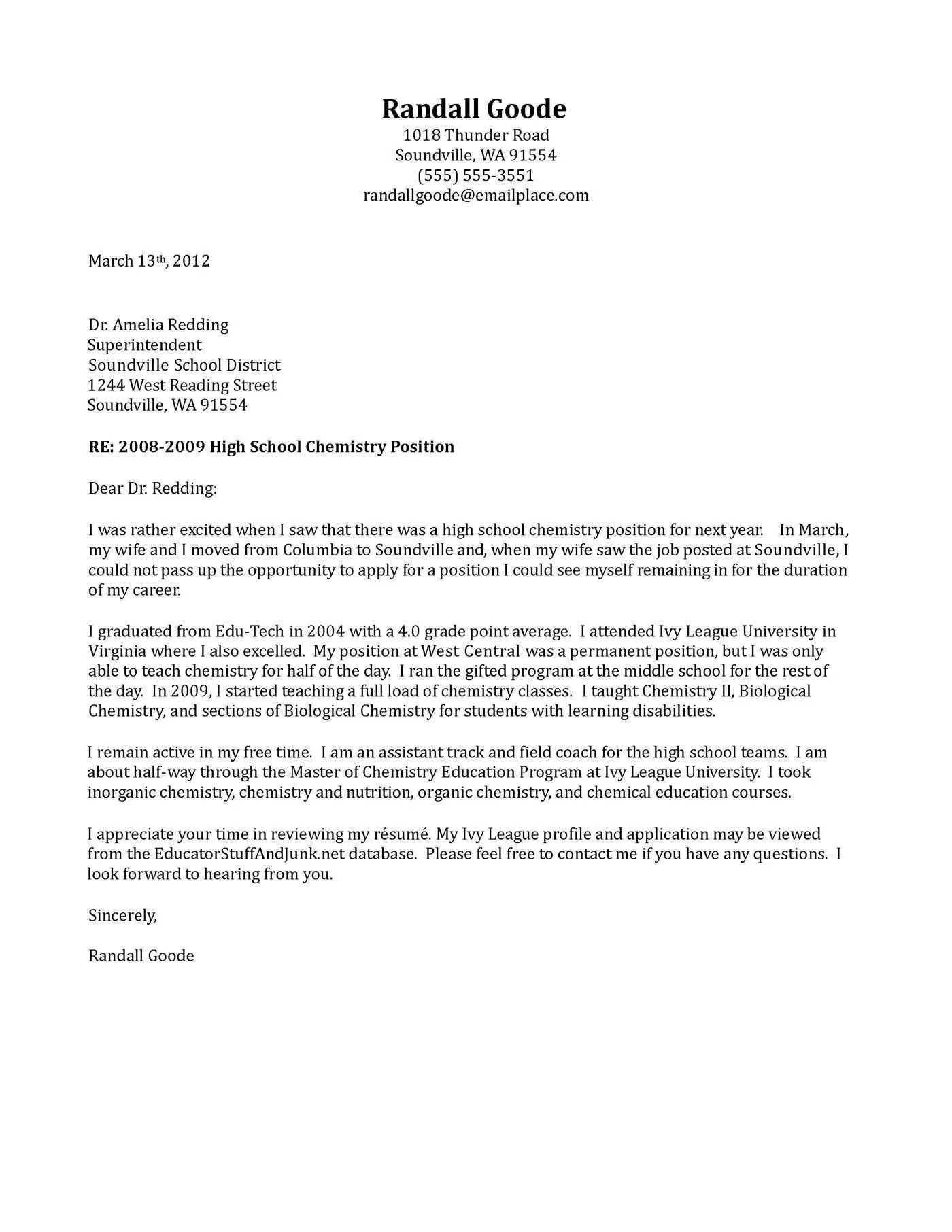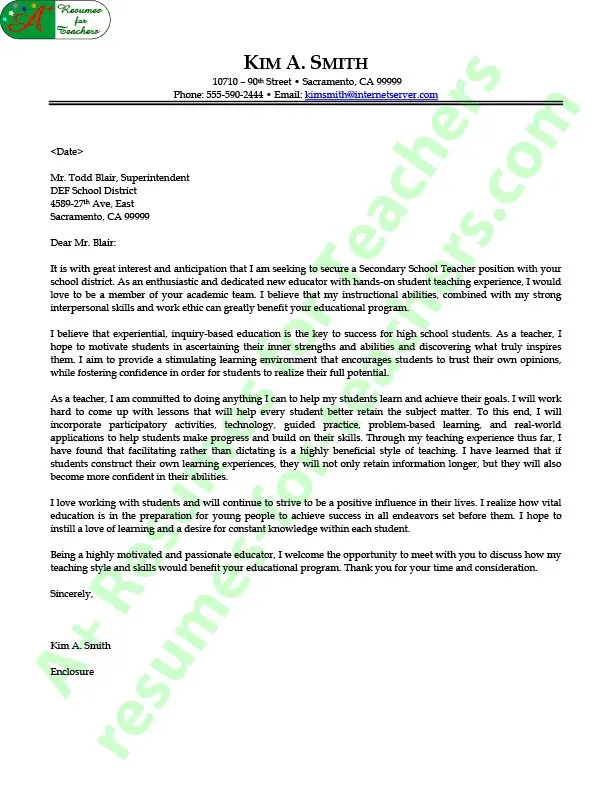Crafting a High School Teaching Cover Letter
A high school teaching cover letter is your first impression, a crucial document that often determines whether you advance to the interview stage. It’s your opportunity to go beyond the bullet points of your resume and demonstrate your passion for teaching, your understanding of the specific school, and your suitability for the role. This letter should be a compelling narrative that showcases your personality, your teaching philosophy, and your commitment to student success. It’s not just about listing your qualifications; it’s about weaving a story that highlights your strengths and connects them to the school’s needs and values. A well-crafted cover letter can significantly increase your chances of landing an interview and ultimately securing your dream teaching position. It’s the key to unlocking the door to a rewarding career in education, and it deserves careful attention and meticulous execution to make a lasting positive impact.
Researching the School and Position
Before you even begin writing, thorough research is paramount. Start by visiting the school’s website to understand its mission, values, and academic programs. Look for details about the school’s culture, extracurricular activities, and any specific initiatives it may be undertaking. Understanding the school’s ethos is crucial, allowing you to tailor your cover letter to align with its goals. Next, carefully read the job description. Identify the key requirements, skills, and qualifications the school is seeking. Use the job description as a guide to highlight your relevant experience and skills, ensuring that you address the specific needs of the position. Tailoring your cover letter to each school and position demonstrates your genuine interest and attention to detail, significantly increasing your chances of getting noticed by the hiring committee. This research not only informs your writing but also allows you to demonstrate that you’re genuinely interested in joining their team.
Highlighting Your Teaching Philosophy

Your teaching philosophy is the heart of your cover letter, showcasing your beliefs about education, your approach to student learning, and your commitment to creating a positive classroom environment. Clearly articulate your core values as an educator, such as fostering critical thinking, promoting student engagement, or differentiating instruction to meet diverse learning needs. Provide specific examples of how you implement your philosophy in the classroom. Share experiences that illustrate your ability to connect with students, inspire them to learn, and create a supportive learning atmosphere. Whether your focus is on project-based learning, collaborative activities, or individual student support, make sure your teaching philosophy resonates with the school’s values. Your philosophy should demonstrate not only what you believe but also how you put your beliefs into practice, making it a powerful tool for connecting with the hiring committee and highlighting your commitment to student success.
Demonstrating Relevant Experience
Your cover letter is the ideal place to elaborate on your teaching experience, going beyond the brief descriptions found on your resume. Provide detailed examples of your past teaching roles, including the grade levels and subjects you taught. Describe specific classroom activities, lesson plans, and projects that demonstrate your ability to engage students and achieve learning objectives. Quantify your accomplishments whenever possible. For example, instead of simply stating that you improved student performance, specify the percentage increase in test scores or the number of students who achieved specific learning milestones. Highlight any experience working with diverse student populations, differentiating instruction, or using technology in the classroom. Connect your experience to the specific requirements of the job description, ensuring that your letter showcases your suitability for the role. This approach demonstrates that you have not only the experience but also the skills necessary to excel in the position.
Showcasing Skills and Qualifications
In your cover letter, explicitly highlight your key skills and qualifications, matching them to the requirements outlined in the job description. Showcase your expertise in classroom management, lesson planning, curriculum development, and assessment. Mention any relevant certifications, such as teaching licenses or subject-matter endorsements. Describe your ability to use technology effectively in the classroom, including specific software or platforms. Demonstrate your strong communication, interpersonal, and organizational skills. Provide specific examples that illustrate your proficiency in these areas. For instance, describe how you successfully managed a challenging classroom situation or how you developed an engaging lesson plan. The goal is to convince the hiring committee that you possess the necessary skills and qualifications to be a successful teacher at their school, and that you are a well-rounded candidate.
Emphasizing Achievements and Impact

Focus on your achievements and the positive impact you’ve made in previous teaching roles. Instead of simply listing your responsibilities, describe the specific outcomes of your efforts. For example, highlight improvements in student test scores, increased student engagement, or successful implementation of new teaching strategies. Quantify your achievements whenever possible, using data and metrics to demonstrate your impact. Consider including testimonials from former students, parents, or colleagues that attest to your abilities. Emphasize any awards or recognitions you’ve received for your teaching excellence. The aim is to showcase your ability to make a difference in students’ lives and contribute to the overall success of the school, illustrating that you are a results-oriented educator who is committed to student growth and achievement. By focusing on accomplishments, you show the hiring committee what you’re capable of and what they can expect if they hire you.
Formatting Your Cover Letter Professionally
A well-formatted cover letter is crucial for making a positive first impression. Use a professional font, such as Times New Roman or Arial, and ensure that your letter is easy to read. Maintain consistent formatting throughout the document, including font size, spacing, and alignment. Use clear headings and subheadings to organize the content and make it easy for the reader to scan. Proofread your letter carefully to eliminate any grammatical errors or typos. Include the date, the recipient’s name and title, and the school’s address. Use a formal salutation, such as “Dear Mr./Ms. [Last Name],” and a professional closing, such as “Sincerely” or “Respectfully.” A well-formatted letter shows that you are organized, detail-oriented, and take pride in your work. This attention to detail indicates your professionalism and commitment to excellence. The goal is to create a polished and professional document that reflects well on you and your qualifications.
Proofreading and Editing Your Letter
Thorough proofreading and editing are essential steps in the cover letter writing process. Before submitting your letter, carefully review it for any grammatical errors, spelling mistakes, or typos. Use a spell checker and grammar checker, but also read the letter aloud to catch any awkward phrasing or unclear sentences. Ask a friend, family member, or colleague to review your letter and provide feedback. A fresh pair of eyes can often identify errors that you might miss. Ensure that your cover letter is concise, well-written, and free of errors. Pay close attention to the tone of your letter, making sure it is professional and enthusiastic. Editing your letter will help you present yourself in the best possible light, demonstrating your attention to detail and your commitment to producing high-quality work. This final step can significantly increase your chances of making a positive first impression and securing an interview.
Tailoring the Letter to Each Application

While you can create a template for your cover letter, it’s crucial to tailor each letter to the specific school and position you’re applying for. Customize your letter to reflect the school’s mission, values, and specific requirements. Highlight the skills and experiences that are most relevant to the job description. Research the specific needs and initiatives of the school and explain how your qualifications align with them. Personalize your letter by mentioning the name of the hiring manager or someone you’ve connected with at the school, if possible. Avoid sending generic cover letters, as they often come across as impersonal and uninspired. Demonstrating that you’ve taken the time to research the school and tailor your application significantly increases your chances of getting noticed and making a positive impression. This personalization is the key to showing your genuine interest in the role and your commitment to becoming a part of their team.
